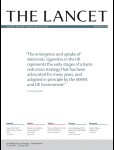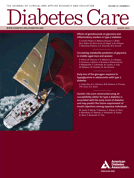LDE:I型糖尿病研究检验 T细胞靶向疗法
2013-09-09 EurekAlert! EurekAlert!
美国华盛顿州西雅图(2013年8月28日)——由Steve Gitelman博士(美国加州大学旧金山分校)领导的、免疫耐受网络(ITN)赞助的兔抗人胸腺细胞免疫球蛋白(Thymoglobulin)抑制新诊断的I型糖尿病研究(START)临床研究的结果发表在了今天的《柳叶刀-糖尿病与内分泌学》(The Lancet Diabetes & Endocrinology)杂志上。这项研究没有达
美国华盛顿州西雅图(2013年8月28日)——由Steve Gitelman博士(美国加州大学旧金山分校)领导的、免疫耐受网络(ITN)赞助的兔抗人胸腺细胞免疫球蛋白(Thymoglobulin)抑制新诊断的I型糖尿病研究(START)临床研究的结果发表在了今天的《柳叶刀-糖尿病与内分泌学》(The Lancet Diabetes & Endocrinology)杂志上。这项研究没有达到它最初的终点:在12个月的时间里,治疗组和安慰剂组的以C肽应答衡量的胰岛素制造的总体下降没有表现出差别。【原文下载】
Thymoglobulin?目前被批准用于治疗器官移植排斥,它是一种抗胸腺细胞免疫球蛋白(ATG),这是称为抗体的专门蛋白的混合体。这些抗体本身附着在称为T细胞的白细胞上,干扰它们的功能并且暂时从血液中清除掉它们。在I型糖尿病的发展期间,T细胞错误地破坏了胰腺分泌胰岛素的beta细胞。免疫耐受网络(ITN)的研究人员提出了一种假说,即用Thymoglobulin治疗新发的I型糖尿病将会干扰T细胞的活化并且可能诱导产生耐受性。
START 的II期研究招募了58名新发I型糖尿病的病人,年龄在12到35岁。这些病人随机地以2:1的比例分组获得抗胸腺细胞免疫球蛋白(ATG)治疗或者安慰剂。抗胸腺细胞免疫球蛋白(ATG)组的病人在该研究开始的时候连续四天接受了静脉注射抗胸腺细胞免疫球蛋白(ATG);安慰剂组的病人获得了生理盐水。在6个月的时间里,科研人员测量了这两个组的病人的胰岛素制造情况。该研究是关于新发I型糖尿病病人抗胸腺细胞免疫球蛋白(ATG)疗法的首个严格的、安慰剂对照的多中心研究。
对抗胸腺细胞免疫球蛋白(ATG)治疗组的进一步研究揭示出了在这12个月期间的两种不同的变化率。Beta细胞功能的下降大部分发生在前6个月。有趣的是,这种功能在最初阶段的下降局限于更年轻的病人(12 到21岁),而年龄更大的病人(21岁以上)在这12个月里的胰岛素制造几乎没有从基准水平减少。几乎所有的治疗组的病人在抗胸腺细胞免疫球蛋白(ATG)输液之后都遇到了血清病和细胞活素释放综合征,这组科研人员提示这种早期细胞活素诱导可能导致了不利的beta细胞功能的流失,特别是对于更年轻的病人。
对来自START病人的血样的分析表明,在抗胸腺细胞免疫球蛋白(ATG)输液之后T细胞迅速减少,这符合这种药物的已知作用机制。然而,科研人员在头6个月观察到了两种专门的T细胞亚型之间的显著差异:炎症的重要调控者效应记忆T细胞没有下降,而在抑制免疫攻击中有益的调控T细胞减少了。
对该实验的受试者的随访可能带来关于对抗胸腺细胞免疫球蛋白(ATG)应答的差异的更多见解,并且可能提示未来关于新发I型糖尿病临床试验可以使用的安全性和有效性生物标记。该研究过程中收集的高质量的临床样本也将是发现关于疾病机制的见解以及发现未来研究的靶标路径的一个重要资源。(生物谷Bioon.com)

doi:10.1016/S0140-6736(13)60023-9
PMC:
PMID:
Interleukin-1 antagonism in type 1 diabetes of recent onset: two multicentre, randomised, double-blind, placebo-controlled trials
Prof Antoinette Moran, MDa, Brian Bundy, PhDb, Prof Dorothy J Becker, MBBChc, Linda A DiMeglio, MDd, Prof Stephen E Gitelman, MDe, Prof Robin Goland, MDf, Carla J Greenbaum, MDg, Prof Kevan C Herold, MDh, Prof Jennifer B Marks, MDi, Prof Philip Raskin, MDj, Srinath Sanda, MDg, Prof Desmond Schatz, MDk, Diane K Wherrett, MDl, Prof Darrell M Wilson, MDm, Prof Jeffrey P Krischer, PhDb, Prof Jay S Skyler, MDn, , , for the Type 1 Diabetes TrialNet Canakinumab Study Group †Linda Pickersgill, MDo, Prof Eelco de Koning, MDp, Prof Anette-G Ziegler, MDq, Prof Bernhard Böehm, MDr, Prof Klaus Badenhoop, MDs, Nanette Schloot, MDt, Jens Friis Bak, MDu, Prof Paolo Pozzilli, MDv, Didac Mauricio, MDw, Prof Marc Y Donath, MDx, Prof Luis Castaño, MDy, Ana Wägner, MDz, Hans Henrik Lervang, MDaa, Hans Perrild, MDab, Prof Thomas Mandrup-Poulsen, MDac, , , for the AIDA Study Group †
Background Innate immunity contributes to the pathogenesis of autoimmune diseases, such as type 1 diabetes, but until now no randomised, controlled trials of blockade of the key innate immune mediator interleukin-1 have been done. We aimed to assess whether canakinumab, a human monoclonal anti-interleukin-1 antibody, or anakinra, a human interleukin-1 receptor antagonist, improved β-cell function in recent-onset type 1 diabetes. Methods We did two randomised, placebo-controlled trials in two groups of patients with recent-onset type 1 diabetes and mixed-meal-tolerance-test-stimulated C peptide of at least 0·2 nM. Patients in the canakinumab trial were aged 6–45 years and those in the anakinra trial were aged 18–35 years. Patients in the canakinumab trial were enrolled at 12 sites in the USA and Canada and those in the anakinra trial were enrolled at 14 sites across Europe. Participants were randomly assigned by computer-generated blocked randomisation to subcutaneous injection of either 2 mg/kg (maximum 300 mg) canakinumab or placebo monthly for 12 months or 100 mg anakinra or placebo daily for 9 months. Participants and carers were masked to treatment assignment. The primary endpoint was baseline-adjusted 2-h area under curve C-peptide response to the mixed meal tolerance test at 12 months (canakinumab trial) and 9 months (anakinra trial). Analyses were by intention to treat. These studies are registered with ClinicalTrials.gov, numbers NCT00947427 and NCT00711503, and EudraCT number 2007-007146-34. Findings Patients were enrolled in the canakinumab trial between Nov 12, 2010, and April 11, 2011, and in the anakinra trial between Jan 26, 2009, and May 25, 2011. 69 patients were randomly assigned to canakinumab (n=47) or placebo (n=22) monthly for 12 months and 69 were randomly assigned to anakinra (n=35) or placebo (n=34) daily for 9 months. No interim analyses were done. 45 canakinumab-treated and 21 placebo-treated patients in the canakinumab trial and 25 anakinra-treated and 26 placebo-treated patients in the anakinra trial were included in the primary analyses. The difference in C peptide area under curve between the canakinumab and placebo groups at 12 months was 0·01 nmol/L (95% CI −0·11 to 0·14; p=0·86), and between the anakinra and the placebo groups at 9 months was 0·02 nmol/L (–0·09 to 0·15; p=0·71). The number and severity of adverse events did not differ between groups in the canakinumab trial. In the anakinra trial, patients in the anakinra group had significantly higher grades of adverse events than the placebo group (p=0·018), which was mainly because of a higher number of injection site reactions in the anakinra group. Interpretation Canakinumab and anakinra were safe but were not effective as single immunomodulatory drugs in recent-onset type 1 diabetes. Interleukin-1 blockade might be more effective in combination with treatments that target adaptive immunity in organ-specific autoimmune disorders. Funding National Institutes of Health and Juvenile Diabetes Research Foundation.
原文下载
Moran A, Bundy B, Becker DJ, DiMeglio LA, Gitelman SE, Goland R, Greenbaum CJ, Herold KC, Marks JB, Raskin P, Sanda S, Schatz D, Wherrett DK, Wilson DM, Krischer JP, Skyler JS; Type 1 Diabetes TrialNet Canakinumab Study Group, Pickersgill L, de Koning E, Ziegler AG, Böehm B, Badenhoop K, Schloot N, Bak JF, Pozzilli P, Mauricio D, Donath MY, Castaño L, Wägner A, Lervang HH, Perrild H, Mandrup-Poulsen T; AIDA Study Group, Pociot F, Dinarello CA.Interleukin-1 antagonism in type 1 diabetes of recent onset: two multicentre, randomised, double-blind, placebo-controlled trials.Lancet. 2013 Jun 1;381(9881):1905-15.
本网站所有内容来源注明为“梅斯医学”或“MedSci原创”的文字、图片和音视频资料,版权均属于梅斯医学所有。非经授权,任何媒体、网站或个人不得转载,授权转载时须注明来源为“梅斯医学”。其它来源的文章系转载文章,或“梅斯号”自媒体发布的文章,仅系出于传递更多信息之目的,本站仅负责审核内容合规,其内容不代表本站立场,本站不负责内容的准确性和版权。如果存在侵权、或不希望被转载的媒体或个人可与我们联系,我们将立即进行删除处理。
在此留言










#靶向疗法#
35